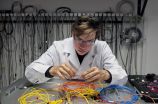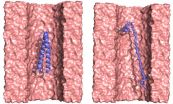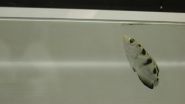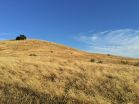Grape waste could make competitive biofuel
2015-08-20
(Press-News.org) The solid waste left over from wine-making could make a competitive biofuel, University of Adelaide researchers have found.
Published in the journal Bioresource Technology, the researchers showed that up to 400 litres of bioethanol could be produced by fermentation of a tonne of grape marc (the leftover skins, stalks and seeds from wine-making).
Global wine production leaves an estimated 13 million tonnes of grape marc waste each year. Nationally it is estimated that several hundred thousand tonnes are generated annually and it is generally disposed of at a cost to the winery.
"This is a potentially economic use for what is largely a waste product," says Associate Professor Rachel Burton, Program Leader with the Australian Research Council (ARC) Centre of Excellence in Plant Cell Walls in the School of Agriculture, Food and Wine.
PhD candidate Kendall Corbin analysed the composition of grape marc from two grape varieties, cabernet sauvignon and sauvignon blanc. She also investigated pre-treatment of the grape marc with acid and enzymes.
Ms Corbin found that the majority of the carbohydrates found in grape marc could be converted directly to ethanol through fermentation with a yield of up to 270 litres per tonne of grape marc. The leftover product was suitable for use as an animal feed or fertiliser.
Ethanol yields could be increased by pre-treatment with acid and enzymes up to 400 litres a tonne.
"Using plant biomass for the production of liquid biofuels can be difficult because of it structurally complex nature that is not always easily broken down," says Ms Corbin.
"Grape marc is readily available, can be sourced cheaply and is rich in the type of carbohydrates that are easily fermented."
Associate Professor Burton says: "We've shown that there is a potential new industry with the evolution of local biofuel processing plants to add value to the grape for an environmentally friendly biofuel."
INFORMATION:
Media Contact:
Ms Kendall Corbin
PhD Candidate
School of Agriculture, Food and Wine
The University of Adelaide
Phone: +61 8 8313 6501
Mobile: +61 (0) 434 610 207
kendall.corbin@adelaide.edu.au
Professor Rachel Burton
Program leader
ARC Centre of Excellence in Plant Cell Walls
School of Agriculture, Food and Wine
The University of Adelaide
Phone: +61 8 8313 1057
Mobile: +61 419 769 713
rachel.burton@adelaide.edu.au
Robyn Mills
Media and Communications Officer
The University of Adelaide
Phone: +61 8 8313 6341
Mobile: +61 (0)410 689 084
robyn.mills@adelaide.edu.au
ELSE PRESS RELEASES FROM THIS DATE:
2015-08-20
The problem has been that the vast majority of these atomically thin 2D crystals are unstable in air, so react and decompose before their properties can be determined and their potential applications investigated.
Writing in Nano Letters, the University of Manchester team demonstrate how tailored fabrication methods can make these previously inaccessible materials useful.
By protecting the new reactive crystals with more stable 2D materials, such as graphene, via computer control in a specially designed inert gas chamber environments, these materials can be successfully ...
2015-08-20
In the Arctic, warming increases like a spiral. Global warming means that the periods of growth are becoming longer and vegetation growth is increasing. At the same time, heat transfer to the Arctic from lower latitudes is rising, reducing sea ice there, and this in turn is contributing towards a faster local rise in temperature.
A new research study published in the highly respected research journal PNAS shows that the situation is the reverse on the Tibetan Plateau.
Vegetation on the Tibetan Plateau has also increased as a result of global warming. However, in contrast ...
2015-08-20
A team at the University of Warsaw, Faculty of Physics has created a laser capable of generating ultrashort pulses of light even under extremely difficult external conditions. This unique combination of precision and resilience is due to the fact that the whole process of generating femtosecond laser pulses takes place within a specially-selected optical fiber.
Its appearance seems quite inconspicuous: just a flat, rectangular box, tens of centimeters across and about the same height, with a thin, shiny-tipped "thread" leading out of it, so long that it is rolled up ...
2015-08-20
University of Pennsylvania researchers have made strides toward a new method of gene sequencing a strand of DNA's bases are read as they are threaded through a nanoscopic hole.
In a new study, they have shown that this technique can also be applied to proteins as way to learn more about their structure.
Existing methods for this kind of analysis are labor intensive, typically entailing the collection of large quantities of the protein. They also often require modifying the protein, limiting these methods' usefulness for understanding the protein's behavior in its natural ...
2015-08-20
Move over, Katniss Everdeen. For archerfish, the odds are ever in their favor, according to new research from Wake Forest University.
The sharp-shooting fish's ability to spit water to hit food targets has been well documented, but a new study published online in the journal Zoology showed for the first time that there is little difference in the amount of force of their water jets based on target distance. And, when given the choice, the fish preferred closer targets.
The study was co-authored by Wake Forest researchers Morgan Burnette, a biology graduate student, ...
2015-08-20
A new study says that global warming has measurably worsened the ongoing California drought. While scientists largely agree that natural weather variations have caused a lack of rain, an emerging consensus says that rising temperatures may be making things worse by driving moisture from plants and soil into the air. The new study is the first to estimate how much worse: as much as a quarter. The findings suggest that within a few decades, continually increasing temperatures and resulting moisture losses will push California into even more persistent aridity. The study appears ...
2015-08-20
COLUMBUS, Ohio - Formula One racing teams may have a lesson to teach business leaders: Innovation can be overrated.
That's the conclusion from academic researchers who pored over data from 49 teams over the course of 30 years of Formula One racing. They found that the teams that innovated the most - especially those that made the most radical changes in their cars - weren't usually the most successful on the race course.
Moreover, radical innovations were the least successful at exactly the times when many business leaders would be most likely to try them: when there ...
2015-08-20
A research team at York has adapted the astonishing capacity of animals such as newts to regenerate lost tissues and organs caused when they have a limb severed.
The research, which is funded by a £190,158 award from the medical research charity Arthritis Research UK, is published in Nature Scientific Reports.
The scientists, led by Dr Paul Genever in the Arthritis Research UK Tissue Engineering Centre in the University's Department of Biology, have developed a technique to rejuvenate cells from older people with osteoarthritis to repair worn or damaged cartilage ...
2015-08-20
Physicists suggest a new way to look for dark matter: They beleive that dark matter particles annihilate into so-called dark radiation when they collide. If true, then we should be able to detect the signals from this radiation.
The majority of the mass in the Universe remains unknown. Despite knowing very little about this dark matter, its overall abundance is precisely measured. In other words: Physicists know it is out there, but they have not yet detected it.
It is definitely worth looking for, argues Ian Shoemaker, former postdoctoral researcher at Centre ...
2015-08-19
Putnam Valley, NY. (Aug. 19, 2015) - A team of researchers in South Korea has successfully transplanted mesenchymal stromal cells (MSCs) derived from human amniotic membranes of the placenta (AMSCs) into laboratory mice modeled with oxygen-induced retinopathy (a murine model used to mimic eye disease). The treatment aimed at suppressing abnormal angiogenesis (blood vessel growth) which is recognized as the cause of many eye diseases, such as diabetic retinopathy and age-related macular degeneration. The researchers reported that the AMSCs successfully migrated to the retinas ...
LAST 30 PRESS RELEASES:
[Press-News.org] Grape waste could make competitive biofuel



